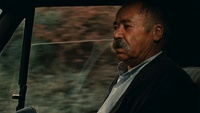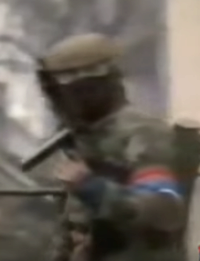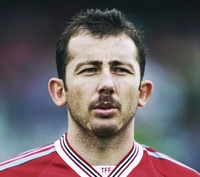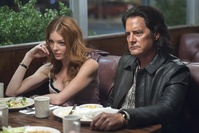Serije kao takve

- Guest
- Post n°426
 Re: Serije kao takve
Re: Serije kao takve
Malo se mnogo igra stereotipima za sadašnju publiku, ali nije loša.

- Posts : 16550
Join date : 2014-11-06
- Post n°427
 Re: Serije kao takve
Re: Serije kao takve
nisam gledala seriju još, čekam da emituju sve pa ću onda, btw, u moru komentara
kako u civilizovanom svetu tako nešto (nebriga vlade i zataškavanje) ne može da se desi,
svetu tako nešto (nebriga vlade i zataškavanje) ne može da se desi,
neko je iskopao ovaj tekst:
https://www.theguardian.com/world/2013/sep/20/usaf-atomic-bomb-north-carolina-1961
za malo izbegnuta katastrofa.
kako u civilizovanom
neko je iskopao ovaj tekst:
https://www.theguardian.com/world/2013/sep/20/usaf-atomic-bomb-north-carolina-1961
za malo izbegnuta katastrofa.

- Korisnik

- Posts : 4670
Join date : 2015-02-17
- Post n°428
 Re: Serije kao takve
Re: Serije kao takve
Imali su oni svoj mini Černo, na Ostrvu tri milje u Pensilvaniji.
https://www.counterpunch.org/2014/03/25/three-mile-island-35-years-later/
https://www.counterpunch.org/2014/03/25/three-mile-island-35-years-later/

- Posts : 11763
Join date : 2014-10-27
Location : kraljevski vinogradi
- Post n°429
 Re: Serije kao takve
Re: Serije kao takve
Pizdim od prve epizode. U četvrtoj je konačno antisovjetska propaganda potpuno prevagnula nad dramom katastrofe. Starica odbija evakuaciju evocirajući kako su je razne vojske tjerale još od 1917., pa kaže... onda došao 2.sr, njemački dečki, ruski dečki, pa ipak sam ostala. Njemački dečki, ruski dečki svejetoisto, ma marš. Onda vojnik ubija kravu dok je ova još muze. Pa likvidacija životinja, ubojice civila iz Avganistana ubijaju najslađe kuce i mace, čista pornografija.Creepy Uncle wrote:meni antisovjetski stereotipovi u seriji smetaju a čak je ni ne gledam. ne znam kako Polip apstrahuje te stvari
_____
Ha rendelkezésre áll a szükséges pénz, a vége általában jó.

- Guest
- Post n°430
 Re: Serije kao takve
Re: Serije kao takve
a čuj, Englezi o Rusima, pa još komunistima, to ne može drukčije da ispadne 


- Posts : 11763
Join date : 2014-10-27
Location : kraljevski vinogradi
- Post n°431
 Re: Serije kao takve
Re: Serije kao takve
Vodim diskusije sa sugledateljima kao u Poljupcu žene pauka o naci fimovima.
_____
Ha rendelkezésre áll a szükséges pénz, a vége általában jó.

- Posts : 82754
Join date : 2012-06-10
- Post n°432
 Re: Serije kao takve
Re: Serije kao takve

_____
"Oni kroz mene gledaju u vas! Oni kroz njega gledaju u vas! Oni kroz vas gledaju u mene... i u sve nas."
Dragoslav Bokan, Novi putevi oftalmologije

- Posts : 11623
Join date : 2018-03-03
Age : 36
Location : Hotline Rakovica
- Post n°433
 Re: Serije kao takve
Re: Serije kao takve
Kao što tekoh, serija je ok, gledljiva je. Doduše segment sa babom jeste bio  . Meni su kudikamo interesantnije reakcije ljudi na seriju, odnosno na sam černbiljski incident. Ta istorijska perspektiva iz ugla američkog gledača GOTa.
. Meni su kudikamo interesantnije reakcije ljudi na seriju, odnosno na sam černbiljski incident. Ta istorijska perspektiva iz ugla američkog gledača GOTa.
 . Meni su kudikamo interesantnije reakcije ljudi na seriju, odnosno na sam černbiljski incident. Ta istorijska perspektiva iz ugla američkog gledača GOTa.
. Meni su kudikamo interesantnije reakcije ljudi na seriju, odnosno na sam černbiljski incident. Ta istorijska perspektiva iz ugla američkog gledača GOTa._____
Sve čega ima na filmu, rekao sam, ima i na Zlatiboru.
~~~~~
Ne dajte da vas prevare! Sačuvajte svoje pojene!

- Posts : 10317
Join date : 2012-02-10
- Post n°434
 Re: Serije kao takve
Re: Serije kao takve
Lol u civilizovanom svetu... u Italiji izgradili branu, survala se planina u akumulaciju, cunami odneo nekoliko sela i bar 2000 duša u večna lovišta... jeste li čuli nekad za to?

- Posts : 10694
Join date : 2016-06-25
- Post n°435
 Re: Serije kao takve
Re: Serije kao takve
Kada ce Fukusima i reaktori GE?
Pa jos plivaju troglave tune ka obali Kalifornije.
Pa jos plivaju troglave tune ka obali Kalifornije.

- Guest
- Post n°436
 Re: Serije kao takve
Re: Serije kao takve
Ajmo malo ozbiljnije:
i opet kad sabereš sve dođeš do ljudske greške i prekoračenja parametara tehničkih mogućnosti te konkretne večeri.
- Spoiler:
- https://sci-hub.tw/https://www.tandfonline.com/doi/abs/10.2747/1538-7216.45.8.588
...
In October 1977, the first reactor came into operation, and a second unit—built as a twinusing the same building (Fig. 2)—went on line the following year. On January 17, 1979,V. V. Fedorchuk, chairman of the Ukrainian SSR KGB, sent a confidential report of violations in the construction of the Chernobyl station to the Central Committee of the Com-munist Party of Ukraine (CC CPU). The report pertained to the construction of the second unit, and to defects in the building of the machine hall, as well as problems with the laying of concrete, and a critical situation with regard to the doorway passages of the power station. In the first nine months of 1978, as a result of the lack of control over technical safety, 170 workers were injured in accidents. In September and October of this same year, fires brokeout in the ventilation shaft of the third reactor unit, then just starting construction (Dopovidna, 1985). One of the difficulties was the acute labor shortage during this period, as well as a dearth of skilled labor. The head of the Building Department at Chernobyl, V. T.Kizima, pointed out the gap between the level of construction and its quality. However, he had been given a rigid timetable, which necessitated the almost total neglect of the regular infrastructure of a nuclear power station. Furthermore, workers at Chernobyl were engaged in “socialist competition” with their counterparts at the Kursk atomic power station insouthern Russia.5 Prior to the first reactor coming on stream, about 10,000 workers wereemployed on the Chernobyl project, 50 percent of which were reported to be young people,with little to occupy their leisure hours outside the working day (Literaturna Ukraina,July 23, 1976).
...
The early operation of the station was fraught with emergency shutdowns that wereattributed to the poor quality or malfunctioning of equipment. In the period 1977–1981, for example, there were 29 emergency shutdowns, 8 of which were attributed to human error, and the remainder due to technical flaws. Often problems occurred with power supply andthe dangers that were apparent with sudden reductions of power of the RBMK reactor. Therewere also flaws in the turbines manufactured at the Kharkiv Turbo-Generator Factory, affiliated with the Ministry of Energy Machine Construction, and these alone led to three emer-gency shutdowns in the year 1981 (Dopovidna, 1981b). A builder involved in the project and subsequently a resident of Israel, noted after the 1986 accident that the turbines and the piping at Soviet nuclear stations were no different from those at coal-fired power stations andwere lacking in sophistication (Associated Press, May 1, 1986). Similarly, the first energy unit experienced and emergency shutdown in September 1981 because of the failure of themain safety valve. The authorities singled out the Chekhov factory (Moscow region), theproducer of the valve, as bearing the main responsibility for this problem (ibid.).
On September 9, 1982, a serious accident occurred during a test on the first reactor prior to a scheduled shutdown. When the power of the reactor was raised to 20 percent of its peak level, one of the channels ruptured. Initially, the KGB chief of Kyiv city and region, N. K.Vakulenko, saw little reason for alarm. On the following day, he noted that the emergency situation had not led to contamination and that five days would be required for repairs (Povidomlennya, 1982a). By 14 September, in a document signed by the chairman of the Ukrainian KGB, S. Mukha, this period was increased to 10 days and the Ukrainian KGB wasseeking those responsible, with some suspicion that there may have been “hostile intent” onthe part of the perpetrators (Informatsiine, 1982). Gradually the authorities recognized that the radiation situation was out of control. In the reactor compartment on this same day, the radiation level was reported to be 100 times above normal, and virtually uninhabitable. The Soyuzatomenergo industrial association, responsible for the operation of the Chernobylnuclear plant, ordered the creation of a government commission to investigate the causes of the accident, chaired by the head of the association, Gennadiy Veretennikov (Povidomlennya,1982b).
By late October 1982, a top secret report from Vakulenko to Mukha acknowledged that an area up to 14 kilometers northeast of the station had been contaminated, as well as one 5 kilometers to the southwest. Vegetation and topsoil had been polluted, while hot particles containing uranium had been discovered in the latter region. At this time the authorities did not know how much radiation had been released (Dopovidna, 1982a). Only on November 5, two months after the accident, was a report filed to Ukrainian party chief and Soviet Polit-buro member, V. V. Shcherbytsky and marked “top secret.” By this time, the quality of the airwas said to be normal again, but radioactive particles and hotspots of cerium-144, cesium-134, cesium-137, and other radionuclides had been found in the farming community of Chystohalivka, 5 kilometers from the station. Here radioactivity in the soil was “hundreds of times over the permitted norms” and posed the greatest danger of penetration into the human organism and causing serious illness. Rainfall at the time had led to radioactivity in the sta-tion’s coolant reservoir, an area used widely for fishing by locals. The local KGB expressedits satisfaction that no panic had occurred in local communities. KGB workers had been dispatched from Kyiv city and Oblast to help deal with the crisis. The greatest danger to the population, it was reported, is posed by the “hot particles, which might penetrate the respira-tory glands, or get inside the organism by various means and cause serious consequences,including death” (no deaths are cited) (Dopovidna, 1982b).
The documents are silent thereafter on the aftermath of the early accident, other than a report of October 1984 declaring that the first and second units were unsafe because they could not provide adequate protection from leaks of radiation. Paradoxically, the report thenassured the recipient that units 3 and 4—built as twin reactors that shared a turbine hall—didhave such protection and were thus more reliable (Spetsial’ne, 1984). Information about the accident on September 9, 1982 never reached the Soviet public or the international media. Like other accidents of the period, it was carefully concealed. The reports nevertheless pro-vide remarkable testimony. They indicate that the tragic accident in April 1986 was essentially a repeat performance: once again a test on equipment during a scheduled shutdown;once again an attempted cover-up; and this time resulting in the enforced removal of a popu-lation oblivious to the earlier contamination of land around the reactor unit.
- Spoiler:
- https://www.ucis.pitt.edu/nceeer/1988-802-12-Potter.pdf
...
David Marples' careful survey of the Ukrainian press during the 1970s elicits a number of complaints about the shortage ofskilled labor, labor discipline, and the quality of construction at the Chernobyl plant.23V.T. Kizima, the plant building department head,acknowledged these problems and described Chernobyl as "the first universityof atomic construction at which (the workers) themselves had to discover thesolutions to problems."24Evidently they did not discover all of them as the Ukrainian press continued to report on labor and supply problems at Chernobyl. Especially damning and prophetic was an expose in the March 1986 periodicalnLiteraturna Ukraina.25 The author of the article, Lyubov Kovalevska, a journalist with the small Pripyat paperTribuna energetika, provided detailed descriptions of equipment and material shortages, low labormorale, equipment defects, unrealistic building deadlines, and a slackening of construction standards. Worse yet, Kovalevska complained, no learning wastaking place. "The problems of the first energy block were passed on to thesecond, from the second to the third, and so on." The failure, she noted,would be repaid, "repaid over decades to come."2 6Approximately one week before the Chernobyl accident there was one additional prescient report pertaining to nuclear safety conditions in theUkraine. The author was Boris Paton, the President of the Ukrainian Academy of Sciences. At a general assembly meeting of the Academy, held on April 18,Paton decried the Academy's input into environmental protection in theUkraine and proposed that "a thorough study of the entire complex ofecological-economic questions" be undertaken, "using the Chernobyl nuclearpower plant as an example."27While the cautionary notes sounded by Paton,Kovalevska, Kizima, and others did not prevent the nuclear disaster of April26, 1987, the fact that they were allowed to be publicly aired may account,in part, for the survival of the Ukrainian party chief, VolodymyrShcherbytsky, after the accident
i opet kad sabereš sve dođeš do ljudske greške i prekoračenja parametara tehničkih mogućnosti te konkretne večeri.
- Spoiler:
- https://sci-hub.tw/https://www.tandfonline.com/doi/abs/10.2747/1538-7216.45.8.588
Several conclusions can be made from the perusal of these hitherto secret documents onthe accident at Chernobyl.
1. They indicate that there was a longstanding pattern of construction problems at Soviet nuclear power stations and at Chernobyl specifically, as well as the occurrence of atleast one major accident at the plant that contaminated nearby settlements in the vicinity wellbefore 1986. The documents expand considerably the existing knowledge about these prob-lems, cited originally in only one major republican newspaper (Literaturna Ukraina).Although the accident ultimately appears to reflect improper operating procedures and thedesign of the RBMK reactor rather than construction defects of the reactor units, the docu-ments nonetheless highlight and elucidate the careless and lackadaisical attitude toward the construction of nuclear power stations in the former Soviet Union.
2. The KGB reports corroborate the supposition that the authorities were aware of thescale of the accident from the first days, and carefully concealed this information from the Soviet public, as well as the international media. This point has already been emphasized byseveral analysts (Z. Medvedev, 1990; Marples, 1986, G. Medvedev, 1993, Yaroshinskaya,1992), but the new declassified materials provide much more detail and clarification aboutwhat was actually known by local authorities and when. In particular, they add appreciably to the documents found in Yaroshinskaya’s book (1992), which focused on discussions at the Politburo level.
3. They demonstrate that evacuation initially was limited to Pripyat and nearby settlements, but after a visitation by all-Union authorities (Ligachev and Ryzhkov) a more extensive evacuation took place. The evacuees were moved initially to the west, directly to equally dangerous locations.15 The high-level meetings of the Politburo of this period suggest that the concern was less with the population in the Chernobyl region than with Moscow, and foreigners residing in Minsk and Kyiv. The evacuees, along with the clean-up crews, constitute most of the long-term medical casualties and victims of the accident.
4. At the reactor itself, a lack of safety equipment compounded the problems of the firecrews, first-aid workers, and clean-up crews. The new documents highlight a fundamental inattention to basic safety procedures and rules of hygiene, and these were exacerbated by alack of Geiger counters and other equipment, which necessitated a delay in making anassessment of the radiation situation until May 4, more than a week after the disaster occurred. The documents provide a detailed picture of the problems faced by clean-up crews,which were potentially life threatening because of their inability to monitor their radiation levels, and the return to zone work of laborers who already had accumulated a maximumlifetime dose of radiation.
5. Radiation levels reached extreme levels not only in the reactor zone, but in Chernobyl, Kyiv, and other centers in Ukraine and Belarus. Moreover, the levels of radiation in Kyiv and the surrounding area tended to rise rather than diminish during the periodMay 4–11, reflecting a shift in prevailing winds toward the south and east, and radioactive particles entered both the water supply and food chain, compounding the dangers to the local population. Thus in late June, several long-lived isotopes were detected in the city ofKyiv, including cesium-134, cesium-137, zirconium-niobium-95, cerium-141, cerium-144,barium-140, and others (Dovidka, 1986d). There was never any official corroboration thatcitizens of Kyiv faced such dangers, and indeed reports commented frequently that although background levels of radiation had risen in Kyiv, they did not constitute a threat to the popu-lation. Reasons of space have prevented a discussion of the distribution of food productsfrom contaminated areas, but such a situation persisted for some time and represented a fur-ther danger to the populace of Ukraine’s capital city.
6. Although the republican KGB paid special attention to monitoring these difficulties, it was not in a position to take active measures. Such actions were the responsibility of the Government Commission, which reported to the Politburo of the CPSU Central Committee,in which Ryzhkov and Ligachev played the key role, as well as high-ranking officials invarious ministries and other all-Union bodies, such as Izrael, Dolgikh, Il’in, and others. The lack of republican control was to foster discontent and frustration among the local authoritie sin dealing with all-Union government ministries and state committees based in Moscow.Nonetheless, the extent of knowledge among republic-level officials, through the UkrainianKGB, was considerable.
7. Notwithstanding the above, it could be argued that the centralized nature of theSoviet system could be an asset in the case of a major emergency such as Chernobyl.Although we have paid close attention in this paper to failures in the response, it should beadded that coordination of decision-making in Moscow undoubtedly helped in someinstances. But incapacitation at the local level also hindered appropriate responses at times,as did the need to accommodate a dissatisfied and volatile workforce, often terrified by theenvironment in which it was working, and frustrated with the evident failure to achieve theelusive goal of liquidating the consequences of the accident at Chernobyl.

- Posts : 11338
Join date : 2014-10-28
- Post n°437
 Re: Serije kao takve
Re: Serije kao takve
sutra kreće good omens
_____
most of us probably not getting better
but not getting better together

- Guest
- Post n°438
 Re: Serije kao takve
Re: Serije kao takve
jbt petnaest godina pokušavam da završim Sopranose i svaki put me omete Tonijeva sestra. jednostavno batalim jer ne mogu da je gledam.

- Guest
- Post n°439
 Re: Serije kao takve
Re: Serije kao takve
pogledao sam lucifera i ne mogu da kažem da je kraj gluplji od serije
ujednačen nekvalietet
ujednačen nekvalietet

- Posts : 22555
Join date : 2014-12-01
- Post n°440
 Re: Serije kao takve
Re: Serije kao takve
Creepy Uncle wrote:jbt petnaest godina pokušavam da završim Sopranose i svaki put me omete Tonijeva sestra. jednostavno batalim jer ne mogu da je gledam.


- Posts : 10694
Join date : 2016-06-25
- Post n°441
 Re: Serije kao takve
Re: Serije kao takve
По просьбе «Фонтанки» сериал HBO посмотрел Леонид Плескачевский – физик-ядерщик, в момент аварии и в ходе работ по её ликвидации — заместитель руководителя Физического отдела Радиевого института. Летом 1986 года он создавал в Чернобыле лабораторию гамма-спектрометрии, руководил измерениями, которые предопределили ход сооружения саркофага («Укрытия»). До 1991 года занимался исследованиями внутри него. Результаты положены в основу оценки ядерной и радиационной безопасности «Укрытия». В 1989–1993 гг. параллельно изучал закономерности в распределении радиоактивного загрязнения территорий от аварии на Чернобыльской АЭС. В 1993–1994 гг. выступил в роли ведущего эксперта правительственной комиссии по расследованию причин радиационной аварии на Сибирском химическом комбинате (1993 г.) и оценке ее комплексного воздействия на население и окружающую среду.
- Леонид Андреевич, вам понравился сериал?
– Меня потрясла фактура. Удивительно точное воспроизведение. Одежда, телефоны, оборудование. Где они достали в таких количествах львовские автобусы, на которых вывозят жителей Припяти? Интерьеры в квартирах, конечно, не совсем те... но не это главное. Главное — что все остальное не лезет ни в какие ворота. Если назвать это не «Чернобыль», а «Фильм про какую-то аварию», и не называть персонажей именами реальных людей, то все очень здорово. Динамично, интересно. Но фактография, которая под это подложена, — совершенно фантастическая.
Мне очень не понравился откровенный выпад в адрес академика Леонида Андреевича Ильина, который занимался всеми вопросами защиты населения. Там говорится, что «профессор Ильин против выселения Припяти». Профессор Ильин ничего такого не говорил. У него есть очень хорошая книжка «Легенды и мифы Чернобыля». А его делают чуть ли не чудовищем. Замечу, что почти одновременно с Легасовым, который стал чуть ли не главным действующим лицом сериала, в Чернобыле находился и академик Евгений Павлович Велихов, такой же первый заместитель директора Института атомной энергии им. И. В. Курчатова и такой же член правительственной комиссии. О нем в сериале нет ни слова.
- Если разбирать каждый конкретный эпизод, расхождений с исторической правдой, наверное, много. Какие самые принципиальные?
– Большое внимание в фильме уделено бассейну-барботёру. По мнению сценаристов, оказывается, единственный человек в мире, который знал, что он под реактором находится, — какая-то вымышленная ученая дама Хомюк из Беларуси. А на самом деле Легасов и Велихов привезли с собой в Чернобыль целую команду, в которой, к примеру, был член-корреспондент РАН Виктор Алексеевич Сидоренко, наш крупнейший реакторщик. Конечно, устройство реактора все они знали. В чем его сложность: в отличие от реакторов, которые применяются в других странах, реакторы «чернобыльского» типа – РБМК (реакторы большой мощности канальные) состояли из множества маленьких независимых реакторов, вставленных в графитовую сборку. Каждый из них имеет собственную систему подвода и отвода пароводяной смеси. На случай паровой аварии в подреакторном помещении есть паросбросные клапаны. Если давление прорвет эти клапаны, пар уйдет в парораспределительные коридоры, если и этого будет недостаточно — то в бассейн-барботёр, где будет пробулькиваться (барботировать) через слои воды. Так вот: после аварии топливо попало в бассейн-барботёр, когда в нем ещё оставалась вода.
Не было никаких «чернобыльских дайверов»
- Выходит, история с «чернобыльскими дайверами» — миф?
– Никаких «дайверов» не было. Ребят одели в обычные гидрокостюмы, чтобы они не промокли. Никаких водолазных масок и прочего оборудования, показанного в фильме, не было. Воды по пути следования трёх работников ЧАЭС – Алексея Ананенко, Валерия Беспалова и Бориса Баранова – встречалось от силы по колено. Людей отправили для слива полутораметрового слоя воды в барботёре, потому что боялись, что, когда до него дойдет топливо, случится взрыв. Но позже выяснилось, что топливо до барботёра всё же дошло, и дошло быстро, а потом там застыло. И за счет его взаимодействия с водой в бассейне-барботёре образовались так называемые пемзы. Никаких больших доз радиации по пути следования у этой троицы не было, не больше 10 рентген.
...
- Академик Валерий Легасов показан в фильме скромным интеллигентом, который покончил с собой, не вынеся лжи о Чернобыле. Все было не так?
– Опять-таки, высказываю сугубо свою точку зрения. Реальный Валерий Легасов был человеком авторитарным, имел самые тесные связи в ЦК КПСС, был личным ставленником секретаря ЦК Егора Кузьмича Лигачёва. К тому же, будучи химиком, Легасов не слишком разбирался в тонкостях работы ядерных реакторов. В фильме он стоит перед Борисом Евдокимовичем Щербиной навытяжку. Похоже, что в жизни-то было наоборот. С самим Валерием Алексеевичем я не сталкивался, но его команда большой радости не вызывала. Мне, да и многим казалось, что их главной функцией было вертеться около начальства и получать премии правительственной комиссии. В частности, они предложили перекрывать специальными плотинами из цеолита русла малых рек, чтобы радиоактивная вода не попадала в Припять и Днепр...
- В фильме один из вертолетов буквально разваливается от радиации в воздухе. В Чернобыле действительно разбился вертолет, но при других обстоятельствах?
– Этот эпизод из фильма – полная ерунда. В Чернобыле упал единственный вертолет — но это случилось не сразу после аварии, а намного позже, в день собрания по случаю открытия саркофага в октябре 1986 года. Тогда в Чернобыле со мной работал мой молодой сотрудник, Серёжа Чуваев. Он много измерял для военных и сильно с ними сдружился. Они его брали в полеты, а он с вертолета фотографировал ЧАЭС – для себя. И в день этого собрания он уже практически сел в вертолет, и тут оказалось, что из Москвы приехала съемочная группа. И места в машине Сереге не хватило. Этот вертолет и зацепился за трос, свисающий с огромного строительного крана ДЕМАГ над аварийным 4-м блоком ЧАЭС. Все, кто был на борту, погибли. Несколько лет назад сталкер Сергей Кошелев нашел обломки этого вертолета...
- Действительно ли жителей сёл в 30-километровой зоне выселяли, отстреливая скот, как показано в сериале?
– Насколько я знаю, насильственного переселения не было. Мы и в 1986 году, и позже регулярно сталкивались с самосёлами. Кто-то из них отказался выезжать, кто-то тишком вернулся в свои дома и вел хозяйство. Решение о выселении 30-километровой зоны принималось исходя из того, что расплавленное топливо попадет в барботёр, и от его взаимодействия с водой произойдёт взрыв. Но, как я уже говорил, эти опасения оказались неоправданными. Судя по всему, даже Припять можно было не отселять...
- Но ведь ликвидаторы умирают от рака?
– Кто вам это сказал? На меня посмотрите. У меня доза в десятки раз выше, чем у среднего ликвидатора, под триста бэр. Есть официальный медико-санитарный регистр по примерно 200 тысячам ликвидаторов. Действительно, есть повышенная смертность по сравнению с другими группами населения. Но не от онкологии, а от сердечно-сосудистых заболеваний. Пить меньше надо. Но тут ликвидаторы, пожалуй, не виноваты: они оказались в крайне стрессовой ситуации...
- Леонид Андреевич, вам понравился сериал?
– Меня потрясла фактура. Удивительно точное воспроизведение. Одежда, телефоны, оборудование. Где они достали в таких количествах львовские автобусы, на которых вывозят жителей Припяти? Интерьеры в квартирах, конечно, не совсем те... но не это главное. Главное — что все остальное не лезет ни в какие ворота. Если назвать это не «Чернобыль», а «Фильм про какую-то аварию», и не называть персонажей именами реальных людей, то все очень здорово. Динамично, интересно. Но фактография, которая под это подложена, — совершенно фантастическая.
Мне очень не понравился откровенный выпад в адрес академика Леонида Андреевича Ильина, который занимался всеми вопросами защиты населения. Там говорится, что «профессор Ильин против выселения Припяти». Профессор Ильин ничего такого не говорил. У него есть очень хорошая книжка «Легенды и мифы Чернобыля». А его делают чуть ли не чудовищем. Замечу, что почти одновременно с Легасовым, который стал чуть ли не главным действующим лицом сериала, в Чернобыле находился и академик Евгений Павлович Велихов, такой же первый заместитель директора Института атомной энергии им. И. В. Курчатова и такой же член правительственной комиссии. О нем в сериале нет ни слова.
- Если разбирать каждый конкретный эпизод, расхождений с исторической правдой, наверное, много. Какие самые принципиальные?
– Большое внимание в фильме уделено бассейну-барботёру. По мнению сценаристов, оказывается, единственный человек в мире, который знал, что он под реактором находится, — какая-то вымышленная ученая дама Хомюк из Беларуси. А на самом деле Легасов и Велихов привезли с собой в Чернобыль целую команду, в которой, к примеру, был член-корреспондент РАН Виктор Алексеевич Сидоренко, наш крупнейший реакторщик. Конечно, устройство реактора все они знали. В чем его сложность: в отличие от реакторов, которые применяются в других странах, реакторы «чернобыльского» типа – РБМК (реакторы большой мощности канальные) состояли из множества маленьких независимых реакторов, вставленных в графитовую сборку. Каждый из них имеет собственную систему подвода и отвода пароводяной смеси. На случай паровой аварии в подреакторном помещении есть паросбросные клапаны. Если давление прорвет эти клапаны, пар уйдет в парораспределительные коридоры, если и этого будет недостаточно — то в бассейн-барботёр, где будет пробулькиваться (барботировать) через слои воды. Так вот: после аварии топливо попало в бассейн-барботёр, когда в нем ещё оставалась вода.
Не было никаких «чернобыльских дайверов»
- Выходит, история с «чернобыльскими дайверами» — миф?
– Никаких «дайверов» не было. Ребят одели в обычные гидрокостюмы, чтобы они не промокли. Никаких водолазных масок и прочего оборудования, показанного в фильме, не было. Воды по пути следования трёх работников ЧАЭС – Алексея Ананенко, Валерия Беспалова и Бориса Баранова – встречалось от силы по колено. Людей отправили для слива полутораметрового слоя воды в барботёре, потому что боялись, что, когда до него дойдет топливо, случится взрыв. Но позже выяснилось, что топливо до барботёра всё же дошло, и дошло быстро, а потом там застыло. И за счет его взаимодействия с водой в бассейне-барботёре образовались так называемые пемзы. Никаких больших доз радиации по пути следования у этой троицы не было, не больше 10 рентген.
...
- Академик Валерий Легасов показан в фильме скромным интеллигентом, который покончил с собой, не вынеся лжи о Чернобыле. Все было не так?
– Опять-таки, высказываю сугубо свою точку зрения. Реальный Валерий Легасов был человеком авторитарным, имел самые тесные связи в ЦК КПСС, был личным ставленником секретаря ЦК Егора Кузьмича Лигачёва. К тому же, будучи химиком, Легасов не слишком разбирался в тонкостях работы ядерных реакторов. В фильме он стоит перед Борисом Евдокимовичем Щербиной навытяжку. Похоже, что в жизни-то было наоборот. С самим Валерием Алексеевичем я не сталкивался, но его команда большой радости не вызывала. Мне, да и многим казалось, что их главной функцией было вертеться около начальства и получать премии правительственной комиссии. В частности, они предложили перекрывать специальными плотинами из цеолита русла малых рек, чтобы радиоактивная вода не попадала в Припять и Днепр...
- В фильме один из вертолетов буквально разваливается от радиации в воздухе. В Чернобыле действительно разбился вертолет, но при других обстоятельствах?
– Этот эпизод из фильма – полная ерунда. В Чернобыле упал единственный вертолет — но это случилось не сразу после аварии, а намного позже, в день собрания по случаю открытия саркофага в октябре 1986 года. Тогда в Чернобыле со мной работал мой молодой сотрудник, Серёжа Чуваев. Он много измерял для военных и сильно с ними сдружился. Они его брали в полеты, а он с вертолета фотографировал ЧАЭС – для себя. И в день этого собрания он уже практически сел в вертолет, и тут оказалось, что из Москвы приехала съемочная группа. И места в машине Сереге не хватило. Этот вертолет и зацепился за трос, свисающий с огромного строительного крана ДЕМАГ над аварийным 4-м блоком ЧАЭС. Все, кто был на борту, погибли. Несколько лет назад сталкер Сергей Кошелев нашел обломки этого вертолета...
- Действительно ли жителей сёл в 30-километровой зоне выселяли, отстреливая скот, как показано в сериале?
– Насколько я знаю, насильственного переселения не было. Мы и в 1986 году, и позже регулярно сталкивались с самосёлами. Кто-то из них отказался выезжать, кто-то тишком вернулся в свои дома и вел хозяйство. Решение о выселении 30-километровой зоны принималось исходя из того, что расплавленное топливо попадет в барботёр, и от его взаимодействия с водой произойдёт взрыв. Но, как я уже говорил, эти опасения оказались неоправданными. Судя по всему, даже Припять можно было не отселять...
- Но ведь ликвидаторы умирают от рака?
– Кто вам это сказал? На меня посмотрите. У меня доза в десятки раз выше, чем у среднего ликвидатора, под триста бэр. Есть официальный медико-санитарный регистр по примерно 200 тысячам ликвидаторов. Действительно, есть повышенная смертность по сравнению с другими группами населения. Но не от онкологии, а от сердечно-сосудистых заболеваний. Пить меньше надо. Но тут ликвидаторы, пожалуй, не виноваты: они оказались в крайне стрессовой ситуации...

- Posts : 2412
Join date : 2014-10-31
- Post n°443
 Re: Serije kao takve
Re: Serije kao takve
Creepy Uncle wrote:jbt petnaest godina pokušavam da završim Sopranose i svaki put me omete Tonijeva sestra. jednostavno batalim jer ne mogu da je gledam.
jbt, dzenis je najjaci lik.
_____
I don't have pet peeves, I have major psychotic fucking hatreds.

- Guest
- Post n°444
 Re: Serije kao takve
Re: Serije kao takve
ma beži bre, kravetina sebična. ne mogu očima da je vidim.
i onaj šabanin kuranjonja, Furio Đunta. tačno ga vidim na Slovenskoj plaži kako vrti marlboro u Trokaderu.
i onaj šabanin kuranjonja, Furio Đunta. tačno ga vidim na Slovenskoj plaži kako vrti marlboro u Trokaderu.

- Guest
- Post n°445
 Re: Serije kao takve
Re: Serije kao takve
Peta epizoda Černobilja ima uprosečenu ocenu 10.0 na skoro 20k ocena.

- Posts : 37657
Join date : 2014-10-27
- Post n°446
 Re: Serije kao takve
Re: Serije kao takve
Creepy Uncle wrote:jbt petnaest godina pokušavam da završim Sopranose i svaki put me omete Tonijeva sestra. jednostavno batalim jer ne mogu da je gledam.
zamisli kako je toniju
_____
And Will's father stood up, stuffed his pipe with tobacco, rummaged his pockets for matches, brought out a battered harmonica, a penknife, a cigarette lighter that wouldn't work, and a memo pad he had always meant to write some great thoughts down on but never got around to, and lined up these weapons for a pygmy war that could be lost before it even started

- Posts : 11763
Join date : 2014-10-27
Location : kraljevski vinogradi
- Post n°447
 Re: Serije kao takve
Re: Serije kao takve
Je li istina da je Legasov na suđenju rekao da je u Beču lagao i da je govorio o tehničkoj greški u vezi sa šipkama bora i da ga je zato KGB osudio na zabranu znanstvenog djelovanja i na potpunu izolaciju?
_____
Ha rendelkezésre áll a szükséges pénz, a vége általában jó.

- Guest
- Post n°448
 Re: Serije kao takve
Re: Serije kao takve

Ne. Legasov je izneo suv i objektivan prikaz incidenta, ali taj prikaz nije se uklapao u zvanični narativ i skrajnut je kao nebitan i štetan.
KGB u poznom SSSR nije učestvovao u životu akademije na ovaj način, to je štivo iz crtanih filmova.

- Posts : 6599
Join date : 2014-12-09
- Post n°449
 Re: Serije kao takve
Re: Serije kao takve
Мене изненадило да су научници, инжињери (директор пре свега) погазили све сигурносне процедуре да би задовољили бирократске процедуре. Научни тест коме је сврха да обезбеди електрану у ствари је уништи. То је нпр. као када би лекар ризиковао да изазове срчани удар здравом пацијенту само да би могао да упише у картон да је нешто радио тог дана.
_____
"Mogu li ja da kažem ili ćete Vi da vodite intervju sami sa sobom? Samo kad bih mogla da kažem nešto… Prvo, uvek smo govorili našim građanima da ne možemo i nećemo da gledamo na EU kao na ćup sa novcem. Da bolji kvalitet života, radna mesta i bolje plate moraju doći od nas samih i snage naše ekonomije. Želimo da budemo deo EU jer je to mirovni projekat i jer delimo vrednosti sa EU." - Ana Brnabić

- Posts : 6735
Join date : 2012-02-11
- Post n°450
 Re: Serije kao takve
Re: Serije kao takve
uskok i ajduk wrote:То је нпр. као када би лекар ризиковао да изазове срчани удар здравом пацијенту само да би могао да упише у картон да је нешто радио тог дана.
Danasnja vest:
A former nurse has been convicted of murdering 85 patients at two hospitals in northern Germany and handed a life sentence.
Judge Sebastian Buehrmann described Niels Högel's killing spree as "incomprehensible".
Högel, who is already serving life for two murders, administered lethal doses of heart medication to people in his care between 1999 and 2005.
He is believed to be the most prolific killer in Germany's modern history.
Prosecutors said he attacked patients in order to impress colleagues by subsequently trying to revive them.
A former colleague told the German newspaper Bild that Högel was nicknamed "resuscitation Rambo" because of the way he "pushed everyone else aside" when patients needed to be resuscitated.
https://www.bbc.com/news/world-europe-48539894
_____
"Ne morate krenuti odavde da biste dosli tamo. Moguce je krenuti odavde i vratiti se ponovo tu, ali preko onoga tamo."
Aca Seltik, Sabrana razmisljanja o topologiji, tom cetvrti.
My Moon Che Gavara.



 by Guest Thu May 30, 2019 2:16 am
by Guest Thu May 30, 2019 2:16 am